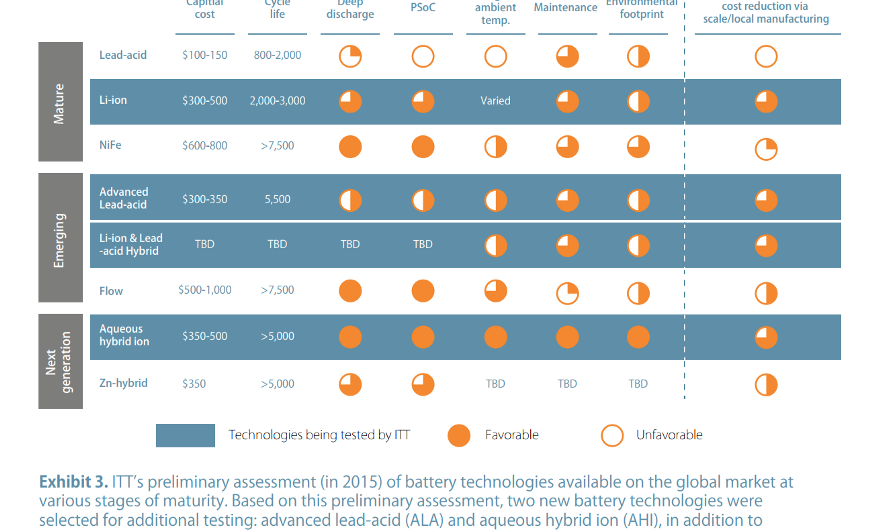New testing by the Institute for Transformative Technologies (ITT) finds Lithium-Ion (Li-ion), Aqueous Hybrid Ion (AHI) and Advanced Lead Acid (ALA) batteries all have strengths, but cost will be king
After several months of testing, ITT’s initial conclusion is that Li-ion batteries appear to be the most suitable for use in solar mini-grids with high power loads, high energy demands, as well as operational stresses such as high ambient temperature, deep cycling and partial state of charge.
However, while costs for Li-ion are coming down, significant unpredictability remains on the future cost of the technology, particularly in India if the batteries have to be imported. “As such, waiting for the costs to drop below the acceptable threshold may be a high-risk proposition,” ITT wrote in a recent report.
AHI batteries, meanwhile, showed high potential in deep cycling at slow charge-discharge rates typical to rural solar mini-grids with residential and small commercial users. Limitations in handling a high-power draw can be compensated with larger battery capacity, or a diesel backup generator managed by a relatively simple control system. Its environmental footprint also appeared to be the cleanest of the various battery technologies examined. Early analysis also suggests the potential to make them in India at a reasonable cost. However, this battery lacks one major advantage that Li-ion has̶ — demand in an application with large and fast-growing market, namely electric vehicles. “This battery technology will likely be feasible only if it can be made (or at least assembled) in India,” the report said.
ALA batteries can easily be accommodated into the manufacturing processes of existing lead-acid battery factories, ITT said. “This battery addresses some of the challenges faced by rural solar mini-grids, namely high power demand, and operation at high ambient temperature.”
As a next step, ITT will further analyze capital costs, as well as total cost of ownership of making the three battery types available and operational in India.
